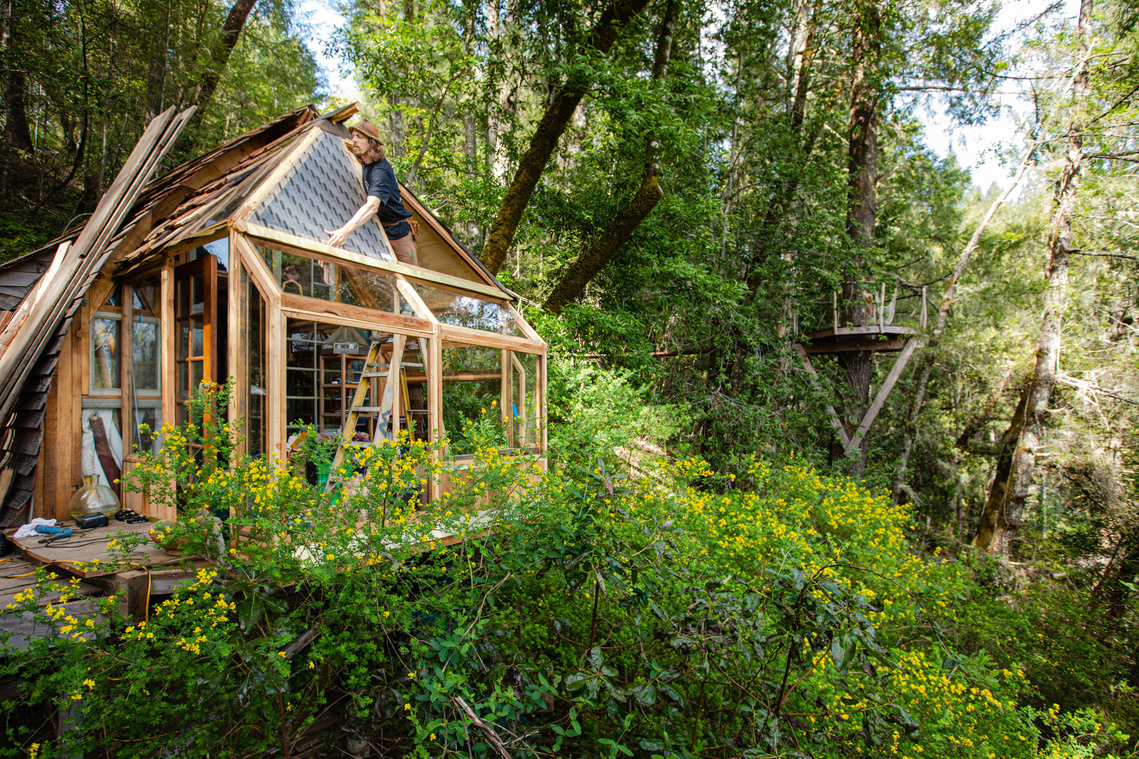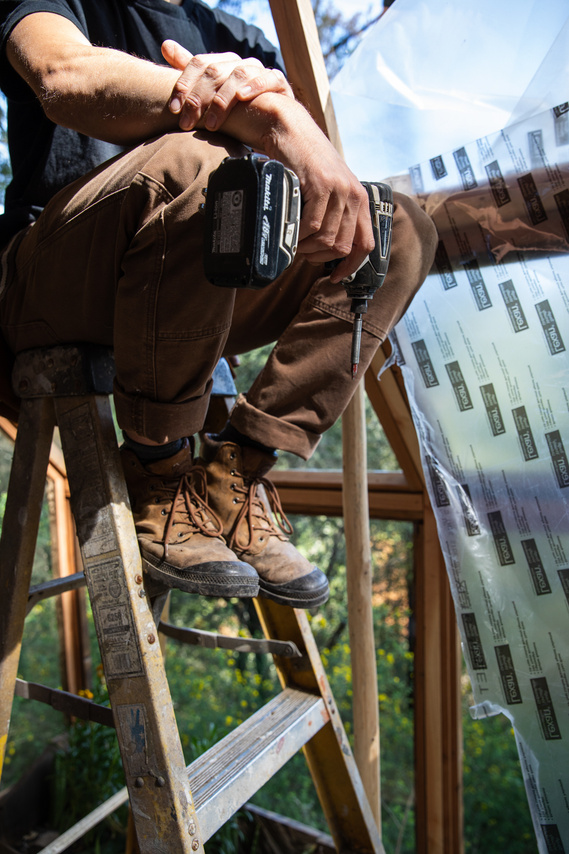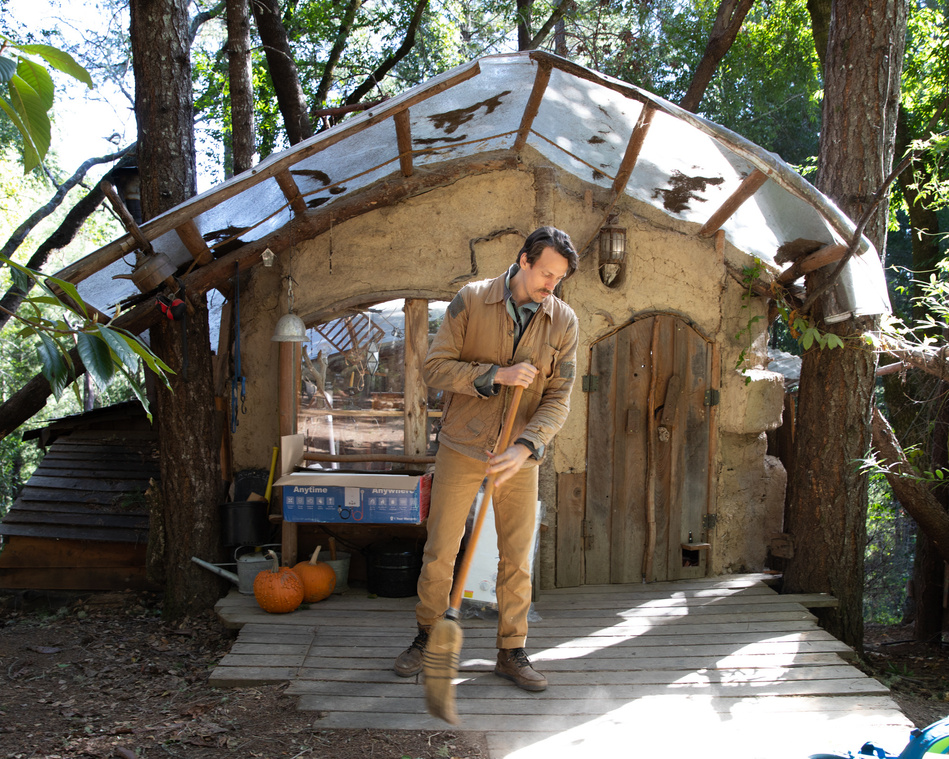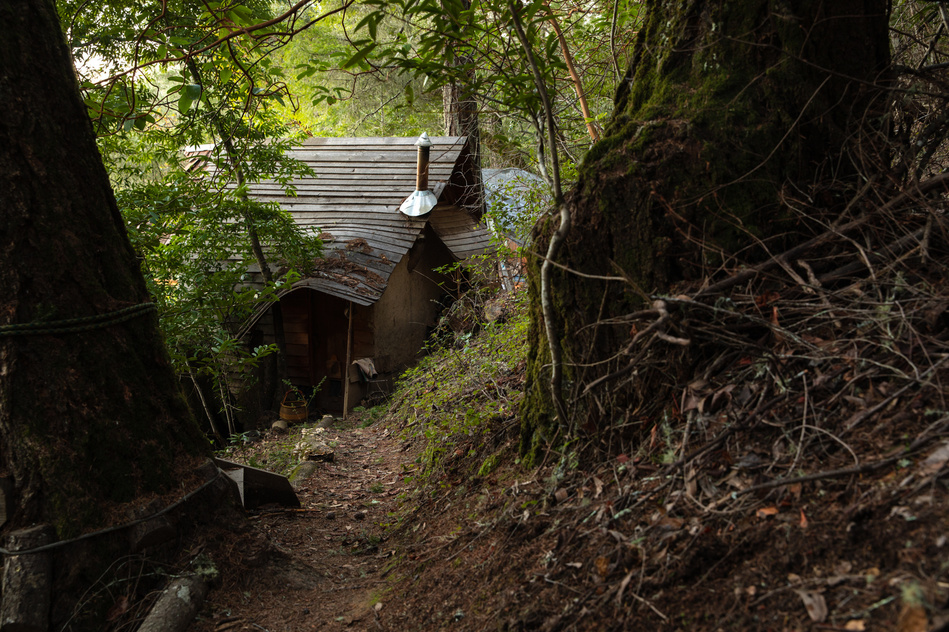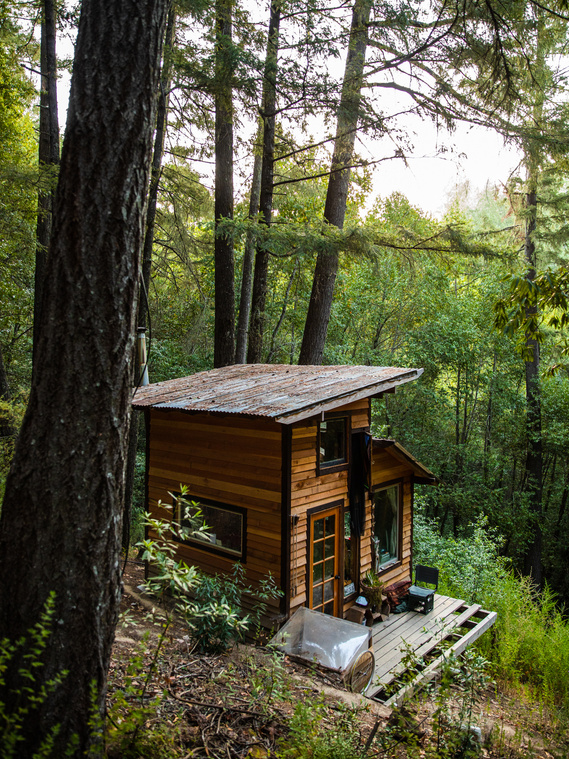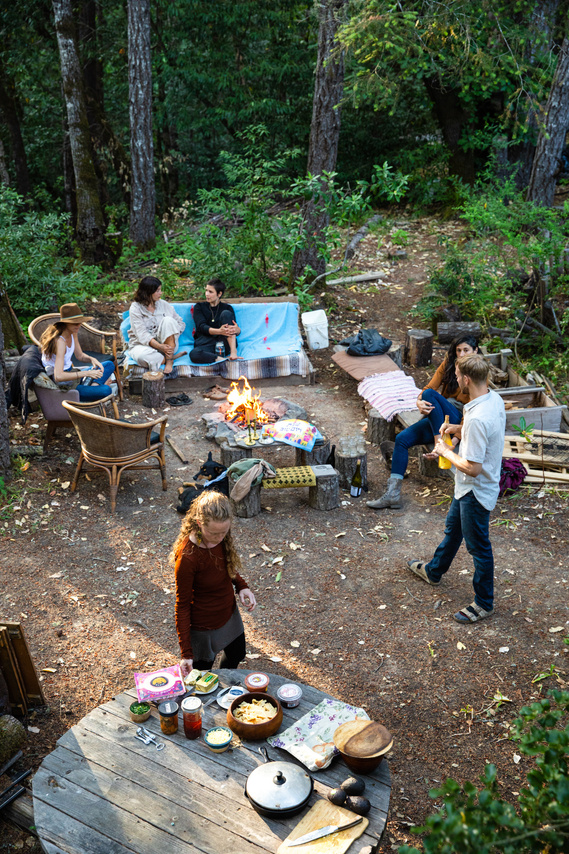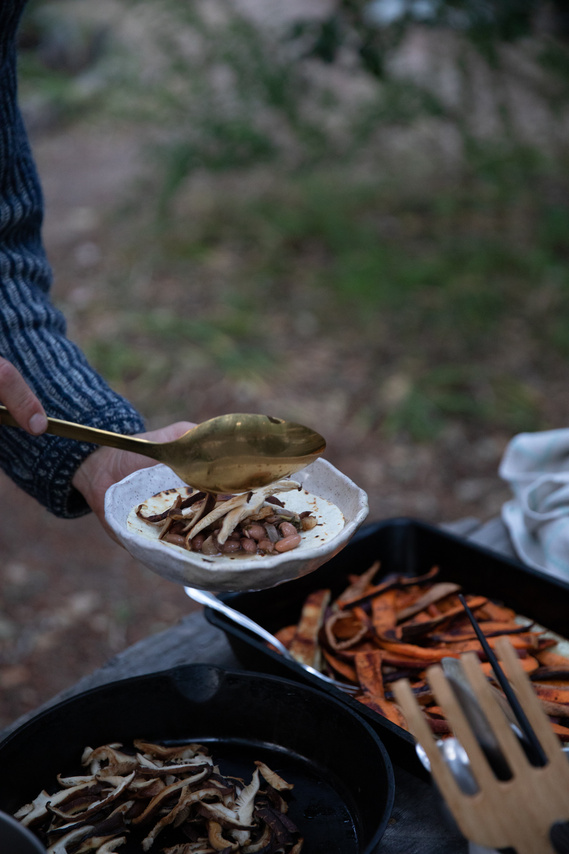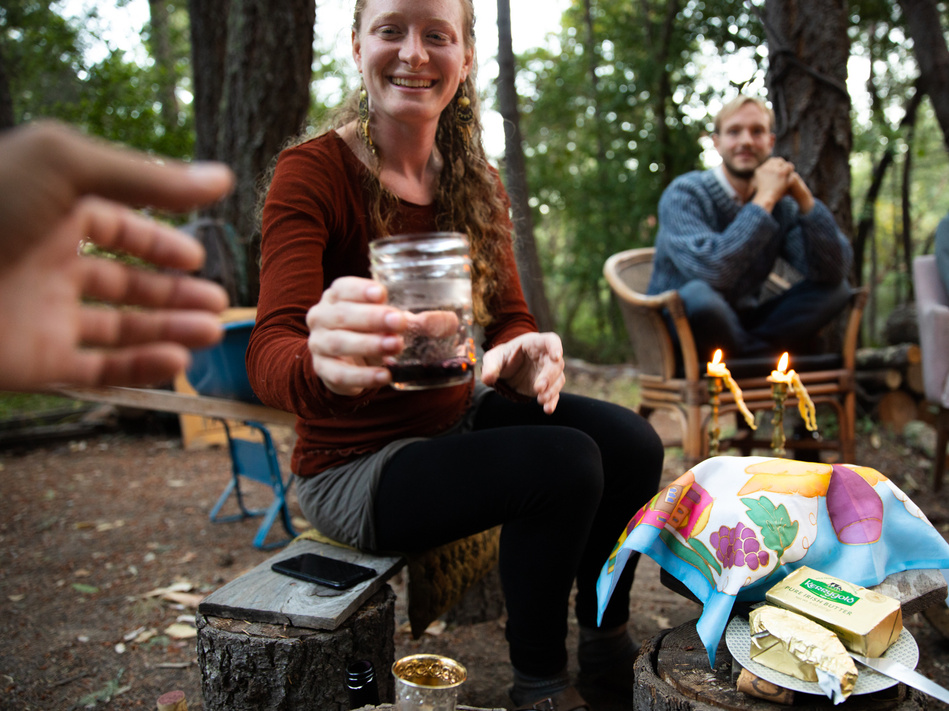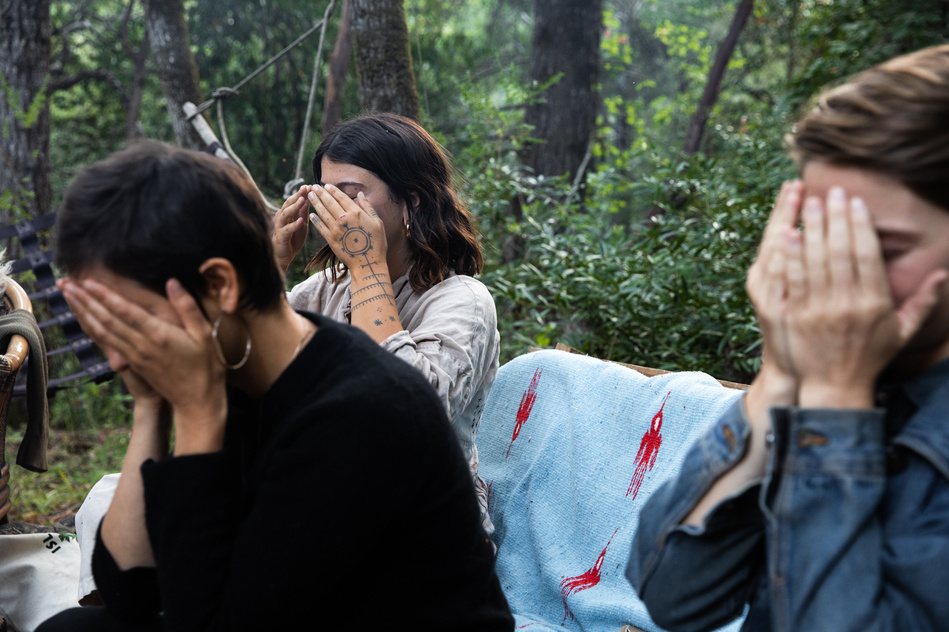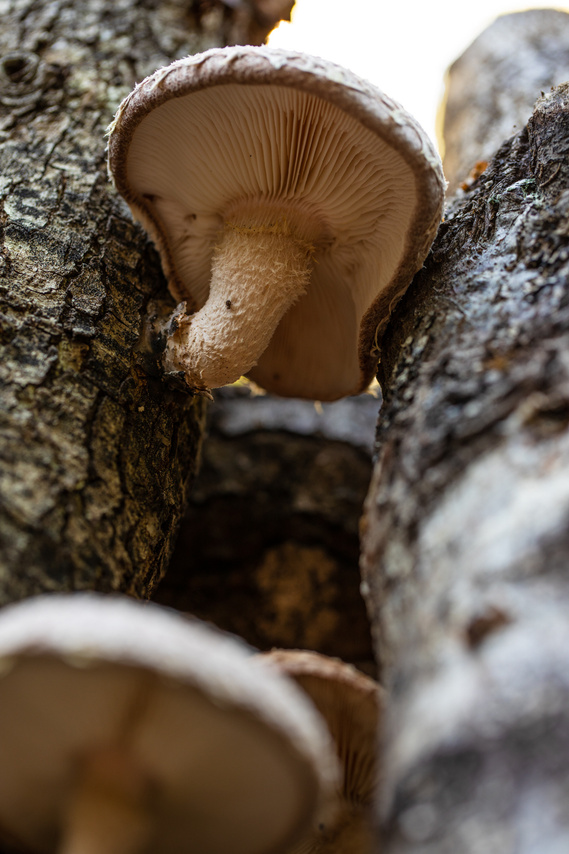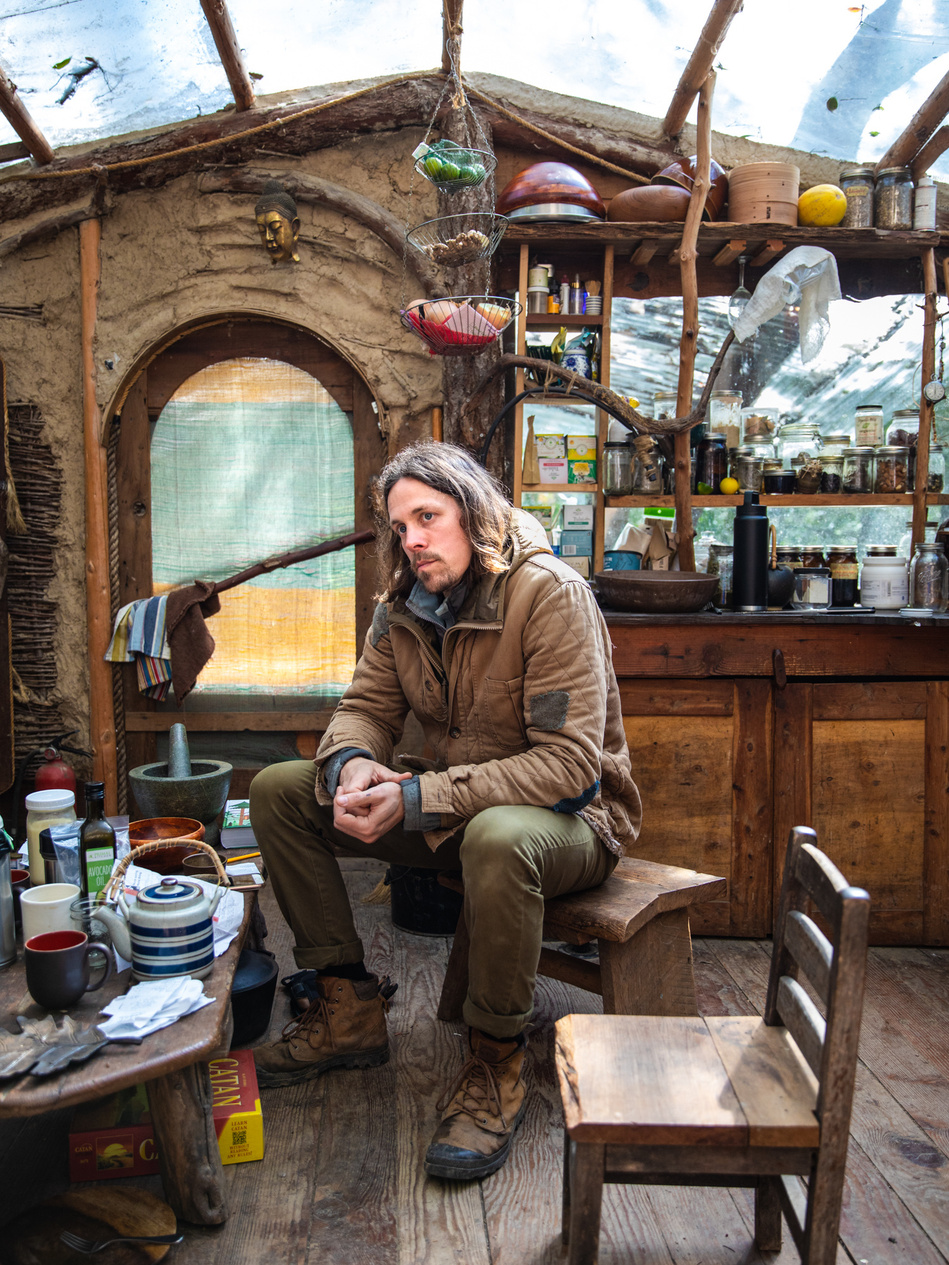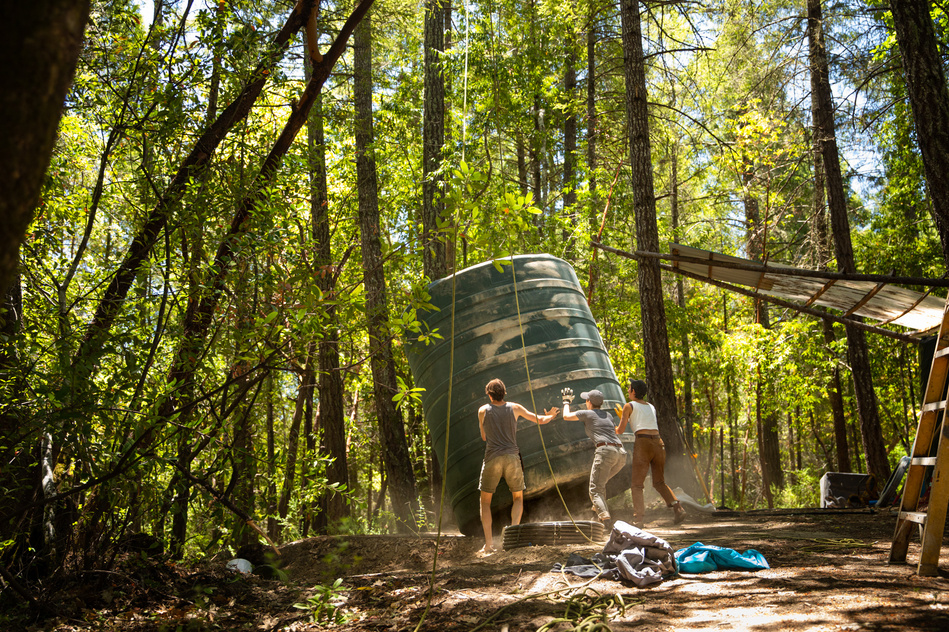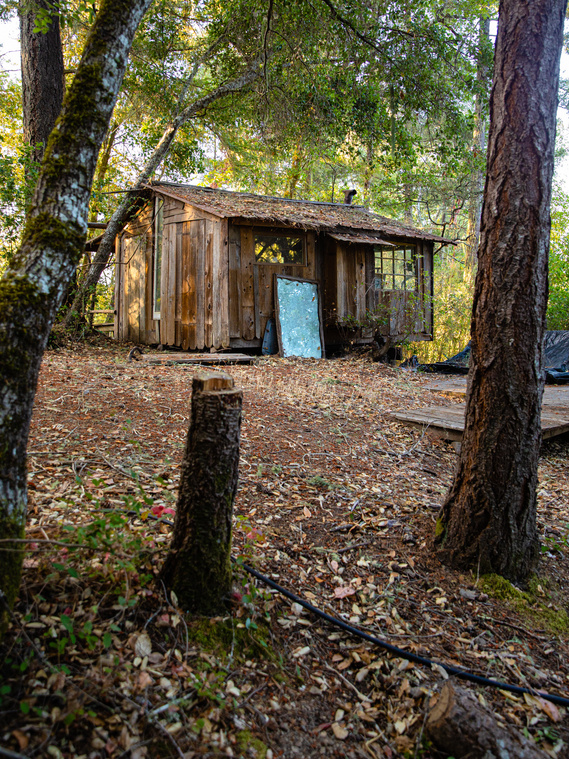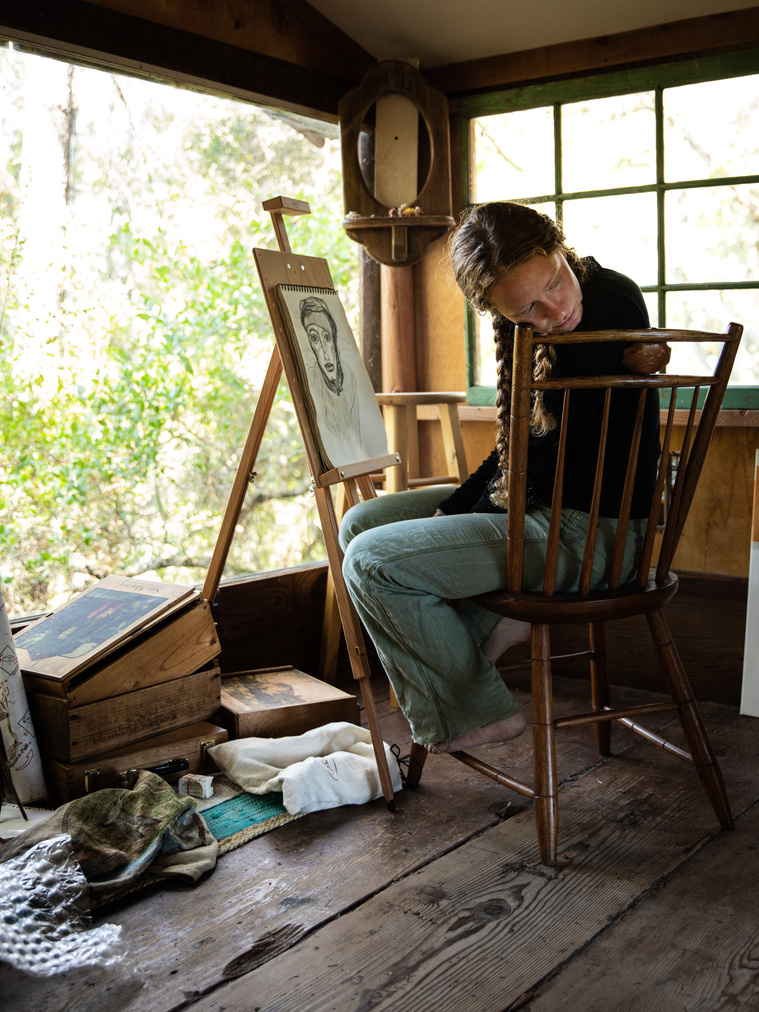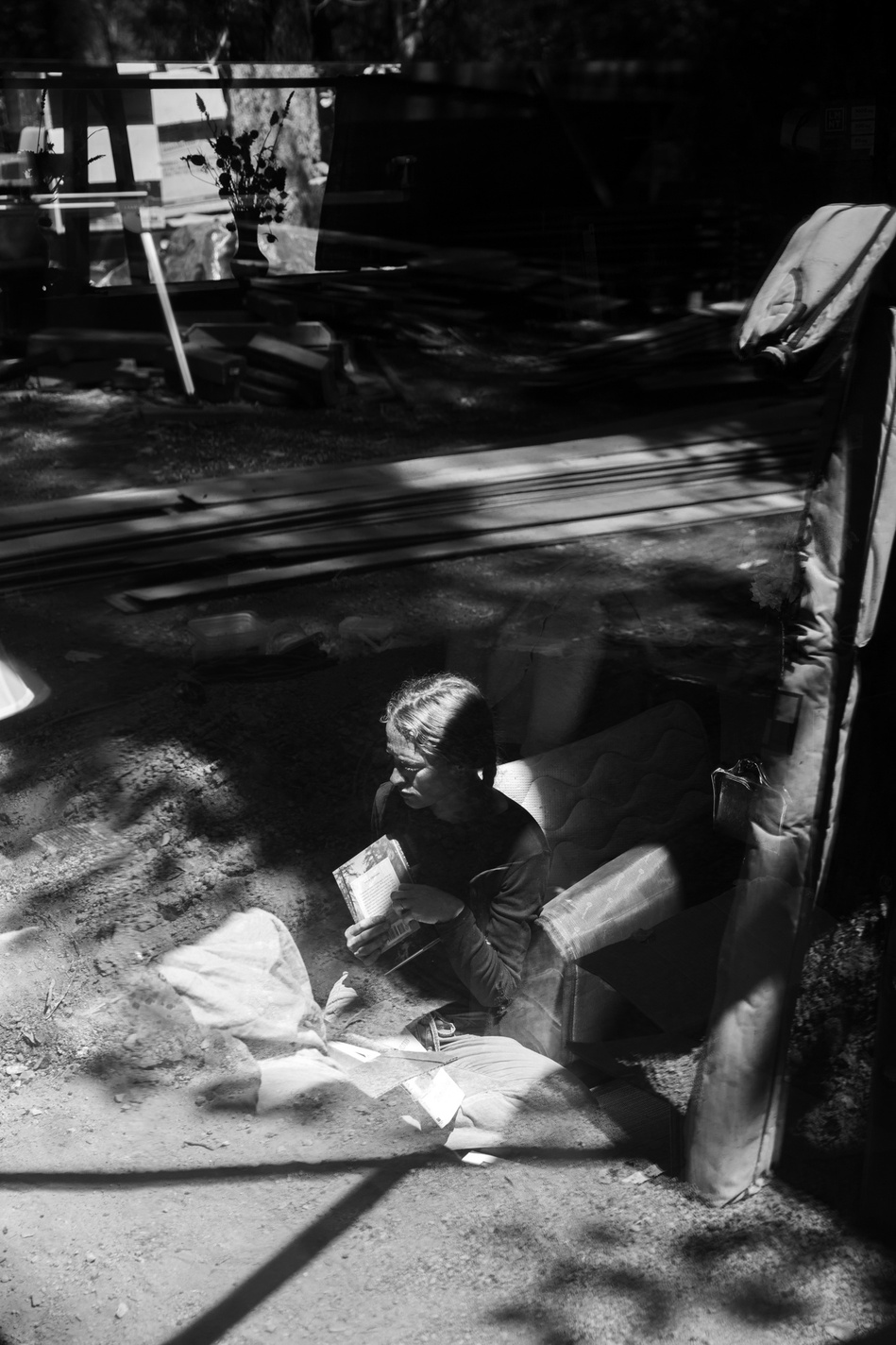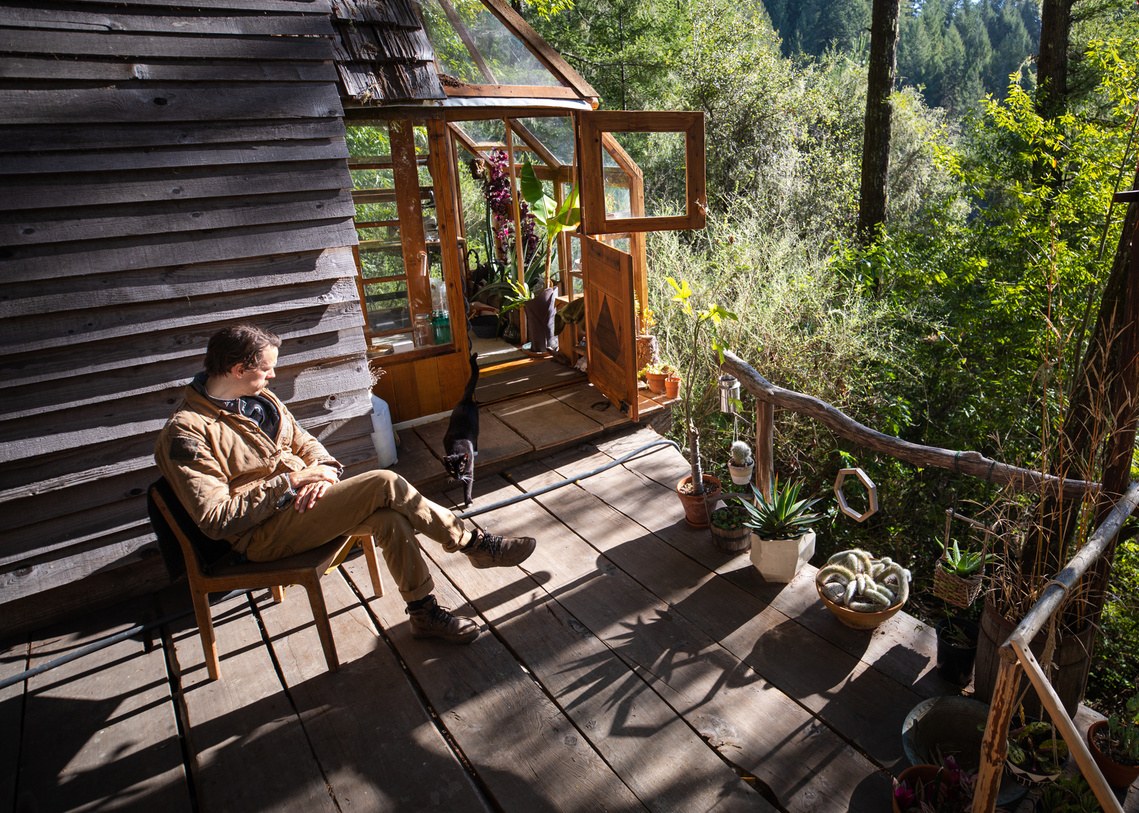PRAXIS
Adapting to Climate Change When You Live in a Treehouse
In the mid 80's my parents decided to move our family to a tiny, remote fishing village on British Columbia’s Porcher Island. They were drawn to a life of freedom, subsistence, and proximity to wilderness.
Sadly, our family’s tenancy on the island was ultimately unsuccessful. I was only 1 year old at the time, and I have no personal memories of this chapter, but I have always felt deeply marked by the fantasy of that simple, remote, and free existence. Even today, my personality seems built on my parents’ attempt at wild freedom and its ultimate failure.
Over a decade of dirtbag travel and van living in wild places failed to land me in a sustainable state of freedom. It seemed that every turn brought me inexorably deeper into dependence on capitalism. I rallied against my own consumerism, fantasizing that the tiny home movement might be my best compromise - even as I married, became a father, and eventually a homeowner in an American suburb like any other American suburb. From the double-pane, vinyl windows of my home, I watched climate-change-driven fires ravage the wild places that I loved best.
Perhaps the world had changed too much from my parents’ time and the fantasy of my childhood was just an impractical theory. Perhaps, approaching 40, I was just lucky to be a Millennial with a house in the San Francisco Bay area.
And then I met Cory Brown.
Cory sweeps the porch in front of the Praxis community kitchen. The structure is one of the oldest on the property and was constructed with living trees and wattle and daub (woven sticks plastered over with natural clay).
Cory was my age, but with longer hair and a taller build tucked into a much-patched jacket. He had left behind a career in Industrial Design and moved out West, disenchanted with the material consumerism his work had been encouraging. He smelled of pine resin and spoke like an engineer.
At Cory’s invitation, I was introduced to a tiny and secretive community in the woods of Northern California called Praxis. “Praxis,” he told me, “means practice as opposed to theory”. Cory, and a small community of conscientious nonconformists, had created and were maintaining the theoretical fantasy of my distant childhood - only that it was a hyperbolic iteration, like a hobbit village dropped into a California oak savannah.
Cory's house on the hillside. Cory built his house using a combination of natural building techniques and materials that maximize passive temperature control.
I was in awe, and a bit distressed that my life had made such a departure from living with the kind of intention that Praxis was managing, but I was welcome to visit often, to participate, and to document.
Praxis, true to its name, revealed itself to be as much a practice as it is a home. From the outside, it appears to be an idyllic reimagining of a Tolkien Shire with tiny houses dotting a forest knol. From the inside though, the reality is an endless, and sometimes grueling, experiment on how to live freely and sustainably.
There’s no blueprint for what these intrepid villagers are trying to do, and every decision in this free space is made with a degree of uncertainty and experimental intrigue. It’s a constant push for independent sustainability that fails as often as it’s successful - but even Cory admits that it’s hard to keep the outside world at bay.
“Some failures are immediate, while others are slow and hard to notice. It’s the slow failures that really have me at odds, the feeling that I haven’t truly found a sustainable lifestyle. Over time, the question of ‘Why is this failing?’ becomes increasingly clear. One could argue that it's mostly due to our human desire for comfort. But I’ve come to believe that it’s almost entirely about the current constructs of global capitalism.”
Cory Brown inspects his shiitake mushroom farm after a first round of mushroom inoculation in reclaimed oak branches. The mushroom farm, which sells to local farmers markets, sits in a seasonal creek bed. The creek helps regulate moisture for the sensitive shiitakes. Shortly after the farm bore its first harvest the creek bed ran dry. The persistent drought in Western North America has made for an uncertain future for many small farms like Cory's.
In 2018 an experiment in natural water filtration failed, compromising their drinking water. Then in 2019 during a prolonged drought, Praxis’ entire freshwater plumbing system failed, leaving the community to haul their water in.
As they labored to upgrade the aging plumbing, one of California’s massive wildfires raged to within mere miles of Praxis, forcing an evacuation. The community sheltered with friends and family scattered throughout California When the smoke cleared, the residents returned, unsure of what they’d find. Incredibly, Praxis had survived - this time.
Alone in the community kitchen, Cory waits for other residents to join him in a meeting to settle shared expenses. Maintaining a fair distribution of labor and expense is an important value for the functioning of Praxis.
Emmett, Cory, and Miriam nearly lose control of their new 3500Gl tank as it wobbles into place at the top of the ridge above Praxis. Though the community has a workshop and many tools, getting heavy equipment up the hill to assist in infrastructure projects is often untenable because of the remote location. In previous years their smaller water storage systems have run dry.
Witnessing the susceptibility of Praxis to the effects of the climate crisis made me reflect on my own home. My family has seen wildfires come to within a couple of miles of our house as well, but we’ve never been forced to evacuate. In suburbia we benefit from a system of fire suppression, social support, and affordable insurance that buffers us from risk.
The cost of safety is not insubstantial though, economically or philosophically. It’s an existential question that trades freedom for security. Our neighbors complained to the city when we removed a diseased tree from our small lot, and just the permitting process to electrify our home cost thousands of dollars.
In an increasingly warming climate, freedom and sustainability may just look different. Or at least, that’s what I keep telling myself.
“Part of what’s happening is that we want to live in two different worlds simultaneously. We want to live in a sustainable relationship with our planet while also still existing within society, and this creates all sorts of ethical duplicities.
“To live truly sustainably would require a more full commitment to leave society on a deeper level - to not need healthcare, a global food system, virtual connection with others around the world, air travel, a Spotify account, packaged goods delivered to your doorstep. And it requires the commitment of others - a devoted hyper-local economy. The chances of these two things happening on a scale that would make a difference are very slim.
“But it doesn’t have to be this way. In my mind, it’s a design problem, first highlighted to me many years ago by William McDonough’s book Cradle to Cradle. It looks at the concept of including end-life-cycle into the design process of any service, product, or structure. If the costs associated with end-life-cycle are the responsibility of the producer, then the need to consider this in the design process becomes one of financial necessity.
“This kind of change to the bottom line makes it very easy for anyone to live much more sustainable lives. Instead of requiring a monumental feat from each individual to circumnavigate the entire design of our current society, one can very easily exist within it and not be forced to make the compromises I’ve found myself making. As much as each of us attempts to live sustainably, I believe we will ultimately fail, unless we begin to embrace cradle to cradle within our global economy.
Don’t get me wrong, I’m not advocating for giving up. As much as this somber perspective is a part of my reality, I still feel called to strive for finding a truly sustainable lifestyle. The process itself has brought all sorts of beauty and meaning into my life. Contradictions aside, it has, without a doubt, palpably guided my life with a sense of perennial purpose. And I believe it can for you too.”
Sunlight washes into the communal kitchen, illuminating a chalkboard scrawled with assigned communal chores.
Not long after the 2019 fire, long-time residents Rebecca and Ryan made the difficult decision to leave Praxis. A subsequent wildfire forced Rebecca to flee in the night with nothing but a cardboard box of hastily gathered belongings. Praxis escaped again, but the siding was still piled beside their beautiful new home while they packed their belongings for good. In this changing climate, the freedom of living in the woods of the Western US was no longer a reasonable risk for them. The couple left to live with Ryan’s family in upstate New York which proved to be a difficult landing after enjoying the freedoms of Praxis.
Rebecca reflects on long tenancy at Praxis while packing up her art studio to leave. Climate change drive wildfires were a primary reason she and her partner Ryan decided to ultimately leave.
Rebecca packs moving boxes in her house at Praxis. She and her partner were still in the process of finishing siding on the building when they decided to leave because of the threat of wildfire.
Despite the risks, over the past 3 years, several more residents have discovered Praxis and made it their home. In 2021 the community rolled a 3500-gallon water tank to the top of the hill, finally completing the off-grid water system overhaul that would secure their water sovereignty. Cory is currently seeking grants for forest fuel reduction work and has recently added a second room to his hillside home.
*cited excerpts from Cory Brown’s Essay “A Leafblower Saved My Life But Is Killing The Planet”


